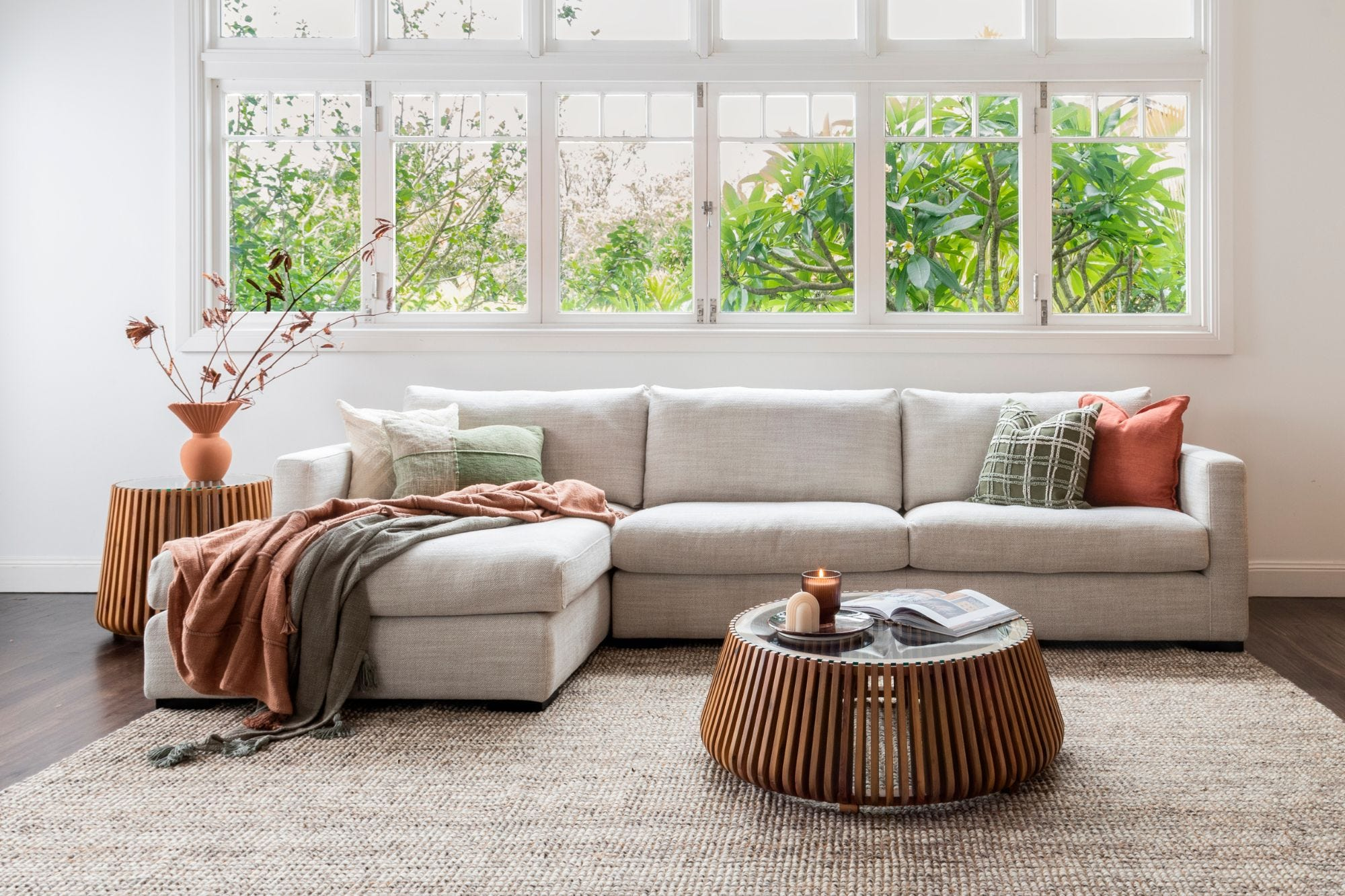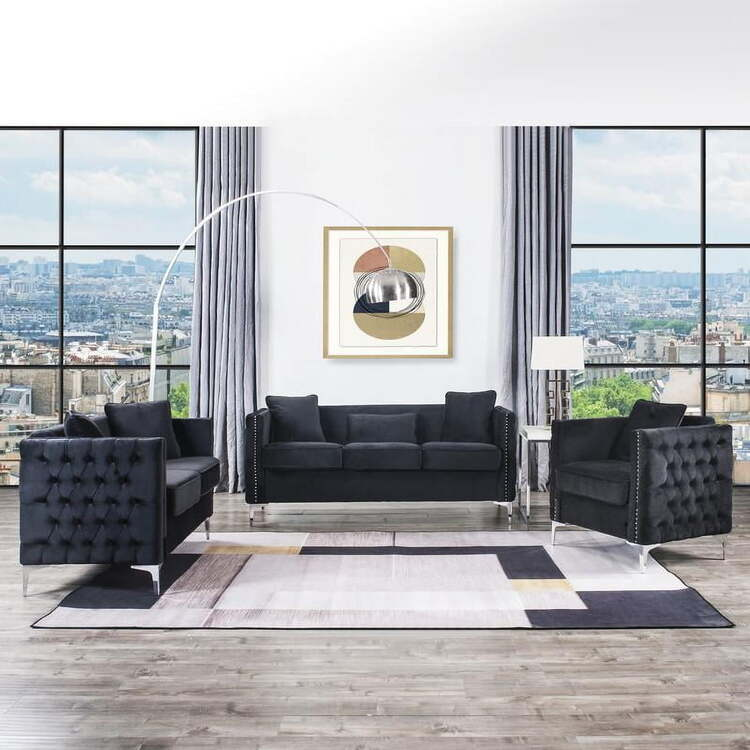We’ve all been there—you invite people over, set up the drinks, light some candles, and then… awkward silences. The conversation doesn’t flow, and people seem more interested in checking their phones than enjoying the space. You chalk it up to the wrong guest list, but maybe—just maybe—the problem isn’t the people. It could be your furniture layout.
The truth is, your sofa set does more than offer a place to sit—it influences the emotional tone, body language, and communication flow in your living space. When it’s poorly chosen or awkwardly placed, it sends subtle signals that can discourage interaction.
Let’s dive into the psychology behind living room layouts and how choosing the right sofa set can turn your space into a social magnet.
The Social Function of Furniture: More Than Just a Seat
Your Living Room Sets the Mood
Your living room isn’t just where you binge-watch Netflix—it’s your home’s social hub. The way you arrange it can either promote connection or create emotional distance. Think about your last few gatherings.
Did everyone cluster around one area? Were guests shifting awkwardly to find space? Layout impacts how people feel the moment they walk in. Tight corners can make guests feel trapped, while too much open space can feel impersonal.
If your current sofa set doesn’t match the flow of the room or sits too far from other key pieces, it’s silently telling people to keep their distance.
Guest Experience Starts With Comfort
Humans are wired for comfort and safety. When someone sits down, they subconsciously assess the environment: Can they relax here? Can they talk freely? Is there enough space? If your seating is too stiff, low, or mismatched, it creates discomfort—not just physically but emotionally.
That’s why the right sofa set matters. It should offer both aesthetic appeal and psychological ease. A well-designed sofa set creates a zone where people instinctively gather. It offers symmetry, proper spacing, and a welcoming vibe. It’s not just décor—it’s social engineering.
What’s Wrong With Most Sofas Today?

Style Over Substance
Let’s face it—many people choose sofas based on how good they’ll look in photos. Sleek, mid-century modern pieces with low backs and shallow seats may look stylish, but if they make your guests fidget, you’ve sacrificed function for fashion. And the irony? When your guests don’t feel good sitting, they won’t stick around long enough to admire the aesthetic.
The “Instagram sofa” craze has led to a flood of stylish but uncomfortable furniture. These pieces are great for solo lounging or short-term sitting but fall flat in a social setting where people want to lean in, turn slightly, or relax deeply.
Cramped, Stiff, and Uninviting
The worst culprits? Overstuffed arms that dominate the room, sofa sets with awkward corner angles, or configurations that make eye contact difficult. You know that “dead zone” in L-shaped sectionals where nobody wants to sit? That’s what we’re talking about.
Your living room shouldn’t feel like a showroom—it should invite interaction. Sofas that are too stiff or too deep alienate rather than connect. A good rule of thumb? If you wouldn’t comfortably sit on your own sofa for two hours, your guests won’t either.
The Psychological Impact of Bad Seating
Why People Avoid “That” Spot
You’ve seen it. There’s always that one seat nobody picks. Why? Because furniture speaks. And that lonely spot—perhaps too close to a loudspeaker, too far from the coffee table, or facing a blank wall—says “Don’t sit here.” Bad seating layout creates social hierarchies: some guests feel center stage, others feel like afterthoughts.
Your sofa set layout should feel like a circle, not a line. Straight-line seating (like when sofas all face a TV) kills conversation. People can’t make eye contact without awkward neck turns, so chats get short or don’t happen at all. If conversation matters more than screen time, circular or semicircle layouts make all the difference.
Subconscious Signals Your Sofa Sends
Beyond comfort, your sofa gives off cues. Neutral tones and soft fabrics say, “Relax here.” Bright colors with stiff edges might scream, “Look but don’t touch.” Materials matter too. Leather, while luxurious, can feel cold. Velvet might feel too fancy. Texture and tone change how a room “feels,” even before anyone speaks. And here’s the kicker: these cues affect the length and quality of conversations.
The better your guests feel physically and emotionally, the longer and more meaningful the interactions will be.
Sofa Sets That Actually Encourage Socializing

Layout Ideas That Promote Conversation
Here’s the thing—furniture layout is just as important as the furniture itself. If your sofa set forms a rigid line facing one direction, you’re not fostering social energy—you’re stifling it. To fix this, try layouts that mirror natural human behavior. Humans like face-to-face interaction.
So instead of a linear or TV-focused setup, try forming a U-shape with your sofa set and chairs. This instantly creates a “conversation pit” feel, encouraging eye contact and shared focus.
Another great trick? Use an ottoman instead of a coffee table. It softens the space and doubles as extra seating or a footrest. When people feel they can move and adjust naturally, they stay longer and talk more.
Matching Your Sofa Set to Your Hosting Style
Not everyone hosts the same way, so why should everyone have the same furniture? Tailor your setup to your habits:
- For game nights or movie marathons: Go for a sectional sofa set with cozy deep seating and built-in cup holders.
- For dinner parties or classy soirées: Two medium-sized sofas facing each other create symmetry and elegance.
- For casual coffee chats: A single three-seater paired with stylish accent chairs offers intimacy without pressure.
Think of your sofa as a stage. What kind of performance do you want to encourage?
How to Upgrade Without Replacing Everything
Swap Out Key Elements
Replacing your entire sofa set can feel like a huge investment—but it doesn’t have to be. Sometimes, small upgrades make a big difference. Start by replacing or adding:
- Throw pillows: They add color, comfort, and a new vibe instantly.
- Slipcovers: A game-changer for outdated sofas—especially if you want to modernize without buying new.
- Rugs and lighting: These frame your sofa set, anchoring the space and making it feel intentional.
Also, consider adding modular pieces like an armless chair or a chaise to extend your current set.
Reconfigure Your Current Setup
Before you buy anything, try rearranging your living room. It might surprise you how much better your space feels with a new orientation. For example:
- Move your main sofa so it doesn’t directly face the TV.
- Create a triangle between your main seating options instead of a single line.
- Add a chair in a corner to fill negative space and balance the room.
You’ll often find the issue isn’t the furniture—it’s how it’s used.
Tips for Shopping the Right Sofa Set Online
What to Look For When You Can’t Sit on It First
Buying a sofa set online can be tricky—you’re choosing comfort without being able to feel it first. But there are ways to reduce the risk:
- Check the dimensions carefully: Use painter’s tape on your floor to outline the size.
- Read reviews about firmness and build quality: Look for keywords like “cushy,” “firm,” “supportive,” or “low to the ground.”
- Watch user-uploaded photos or videos: They often give a truer picture than promotional images.
A trusted online platform like OJCommerce offers detailed specs and customer feedback, which can help guide your decision.
Bringing the Vibe Back Home
Furniture is the Foundation of Your Social Life
A good sofa set isn’t just furniture—it’s a facilitator. It says, “Come in, get comfortable, stay awhile.” And when chosen with care, it can completely transform your hosting experience. The best part? It doesn’t take a full renovation. With intentional choices in layout, seating style, and minor accessories, you can bring new life into your space—and maybe even spark the kind of conversations that turn into memories.
More Than Decor—It’s How You Live Ultimately, your living room should reflect you. If your space isn’t serving your lifestyle, it’s time to rethink—not just how it looks, but how it feels. And often, it starts with the right sofa set.
Conclusion: Your Living Room Is Talking—What’s It Saying?
You don’t need a designer’s budget or an interior architect’s degree to create a welcoming space. You just need to understand the signals your furniture is sending—especially your sofa set. The psychology behind living room layout isn’t complicated. People want to feel included, relaxed, and comfortable.
If your seating arrangement says “watch TV and go home,” it’s no wonder social time feels flat. But if your space invites guests to sink in, turn toward each other, and stay a while? That’s a layout that speaks volumes. Start with intention.
Whether you’re rethinking your room or shopping online for a new sofa set, prioritize the people who’ll sit there. Because in the end, the best living room isn’t the one with the fanciest décor—it’s the one filled with connection, laughter, and conversation.

